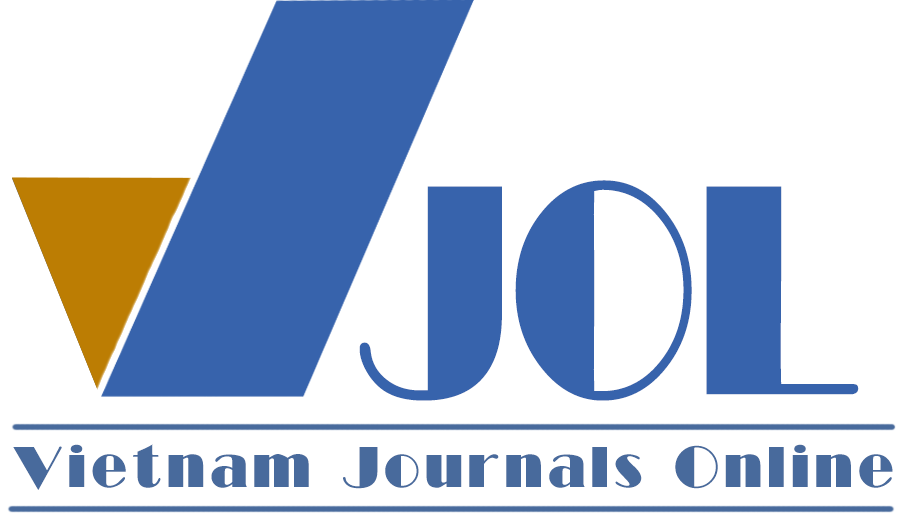Impacts of social assistance on child well-being in Vietnam: The mediating role of household welfare
Authors
DOI: https://doi.org/10.57110/vnujeb.v3i2.163Keywords:
Asset, child well-being, household welfare, social assistance, VietnamReferences
Adato, M., & Bassett, L. (2009). Social protection to support vulnerable children and families: The potential of cash transfers to protect education, health and nutrition. AIDS Care, 21(sup1), 60-75. https://doi.org/10.1080/09540120903112351
Ajaero, C. K., Onokala, P. C., & Ikwuyatum, G. O. (2018). The linkages between international migration, remittances and household welfare in Nigeria. Migration and Development, 7(1), 40-54. https://doi.org/10.1155/2013/610193
Amarante, V., & Brun, M. (2018). Cash transfers in Latin America: Effects on poverty and redistribution. Economía, 19(1), 1-31.
Baron, R.M., & Kenny, D.A. (1986). The moderator-mediator variable distinction in social psychological research: Conceptual, strategic, and statistical considerations. Journal of Personality and Social Psychology, 51(6), 1173. https://doi.org/10.1037/0022-3514.51.6.1173
Barrientos, A. (2019). The role of social assistance in reducing poverty and inequality in Asia and the Pacific. Asian Development Bank Sustainable Development Working Paper Series, 62.
Ben-Arieh, A., Casas, F., Frønes, I., & Korbin, J. E. (2014). Multifaceted concept of child well-being. Handbook of Child Well-being, 1, 1-27. https://doi.org/10.1007/978-90-481-9063-8_134
Brooks, F. (2002). Impacts of child care subsidies on family and child well-being. Early Childhood Research Quarterly, 17(4), 498-511. https://doi.org/10.1016/S0885-2006(02)00186-2
Brooks-Gunn, J., & Duncan, G.J. (1997). The effects of poverty on children. The Future of Children, 55-71.
Burns, J., Keswell, M., & Leibbrandt, M. (2005). Social Assistance, Gender, and the Aged in South Africa. Feminist economics, 11(2), 103-115. https://doi.org/10.1080/13545700500115944
Cahyadi, N., Hanna, R., Olken, B. A., Prima, R. A., Satriawan, E., & Syamsulhakim, E. (2020). Cumulative impacts of conditional cash transfer programs: Experimental evidence from Indonesia. American Economic Journal: Economic Policy, 12(4), 88-110. https://doi.org/10.1257/pol.20190245
Clark, H., Coll-Seck, A. M., Banerjee, A., Peterson, S., Dalglish, S. L., Ameratunga, S., ... & Costello, A. (2020). A future for the world’s children? A WHO–UNICEF–Lancet commission. The Lancet, 395(10224), 605-658. https://doi.org/10.1016/S0140-6736(19)32540-1
Cockburn, J., & Dostie, B. (2007). Child work and schooling: The role of household asset profiles and poverty in rural Ethiopia. Journal of African Economies, 16(4), 519-563. https://doi.org/10.1093/jae/ejl045
Cooper, K., & Stewart, K. (2021). Does household income affect children’s outcomes? A systematic review of the evidence. Child Indicators Research, 14(3), 981-1005. https://doi.org/10.1007/s12187-020-09782-0
Cheema, A., Javeed, A., & Mohmand, S. (2016). Benazir income support programme: Final impact evaluation report. Oxford Policy Management.
Cho, E. Y. N., & Yu, F. Y. (2020). A review of measurement tools for child well-being. Children and Youth Services Review, 119, 105576. https://doi.org/10.1016/j.childyouth.2020.105576
Deaton, A. (1992). Household saving in LDCs: Credit markets, insurance and welfare. The Scandinavian Journal of Economics, 253-273.
Deutsch, J., Silber, J., & Szekely, M. (2020). Asset indexes and the measurement of poverty, inequality and welfare in Southeast Asia. Journal of Asian Economics, 70, 101220.
Dinisman, T., & Ben-Arieh, A. (2016). The characteristics of children’s subjective well-being. Social Indicators Research, 126, 555-569. https://doi.org/10.1007/s11205-015-0921-x
Filmer, D., & Pritchett, L.H. (2001). Estimating wealth effects without expenditure data - or tears: An application to educational enrollments in States of India. Demography, 38(1), 115-132. https://doi.org/10.1353/dem.2001.0003
GSO & CEMA. (2020). Survey results collect information on socio-economic status of 53 ethnic minorities in 2019, Vietnam. General Statistics Office.
GSO & UNICEF. (2021a). Vietnam sustainable development goal indicators for children and women survey 2020-2021, Vietnam. General Statistics Office.
GSO & UNICEF. (2021b). Situation and trends of multi-dimension of poverty children in Vietnam.
Hanlon, J., Barrientos, A., & Hulme, D. (2012). Just give money to the poor: The development revolution from the global south. Kumarian Press.
Heshmati, A., Bajracharya, P., & Maasoumi, E. (2008). Measurement and analysis of child well-being in middle and high-income countries. European Journal of Comparative Economics, 5(2), 187-249.
Hidrobo, M., Hoddinott, J., Peterman, A., Margolies, A., & Moreira, V. (2018). Social protection, food security, and asset formation. World Development, 101, 88-103. https://doi.org/10.1016/j.worlddev.2017.08.014
Hotelling, H. (1933). Analysis of a complex of statistical variables into principal components. Journal of educational psychology, 24(6), 417-441. https://doi.org/10.1037/h0071325
Lloyd-Sherlock, P., Penhale, B., & Redondo, N. (2012). Pensions, poverty and wellbeing in later life: Comparative research from South Africa and Brazil. Journal of Aging Studies, 26(3), 243-252. https://doi.org/10.1016/j.jaging.2012.02.003
Mackenzie, C., Rogers, W., & Dodds, S. (2014). Vulnerability: New essays in ethics and feminist philosophy. Oxford University Press.
Minkkinen, J. (2013). The structural model of child well-being. Child Indicators Research, 6, 547-558. https://doi.org/10.1007/s12187-013-9178-6
Mujeri, M. K. (2015). Improving access of the poor to financial services. General Economics Division of the Planning Commission.
Nardo, M., Saisana, M., Saltelli, A., Tarantola, S., Hoffman, A., & Giovannini, E. (2008). Handbook on constructing composite indicators: Methodology and user guide. OECD. https://doi.org/10.1787/533411815016
Nelson, J. A. (1993). Household equivalence scales: Theory versus policy? Journal of Labor Economics, 11(3), 471-493.
Noorbakhsh, F. (1998). The human development index: Some technical issues and alternative indices. Journal of International Development: The Journal of the Development Studies Association, 10(5), 589-605. https://doi.org/10.1002/(SICI)1099-1328(199807/08)10:5%3C589::AID-JID484%3E3.0.CO;2-S
Paneth, N., Kiely, J. L., Susser, M., & Shin, M. (1982). Newborn intensive care and neonatal mortality in low-birth-weight infants: A population study. New England Journal of Medicine, 307(3), 149-155. https://doi.org/10.1056/NEJM198207153070303
Park, N., & Peterson, C. (2006). Character strengths and happiness among young children: Content analysis of parental descriptions. Journal of Happiness Studies, 7(3), 323. https://doi.org/10.1007/s10902-005-3648-6
Pfeffer, F. T., & Hällsten, M. (2012). Mobility regimes and parental wealth: The United States, Germany, and Sweden in comparison. German Socio-Economic Panel Study – SOEP papers on Multidisciplinary Panel Data Research, 500.
Pickett, K. E., & Wilkinson, R.G. (2015). The ethical and policy implications of research on income inequality and child well-being. Pediatrics, 135(Supplement_2), S39-S47. https://doi.org/10.1542/peds.2014-3549E
Qi, S., Liu, H., Hua, F., Deng, X., & Zhou, Z. (2022). The impact of household assets on child well-being: Evidence from China. Applied Research in Quality of Life, 17(5), 2697-2720.
Raju, D., & Younger, S.D. (2021). Social assistance programs and household welfare in Eswatini. Social Protection and Jobs Discussion Paper No. 2106. World Bank.
Rawlings, L. B. (2005). A new approach to social assistance: Latin America’s experience with conditional cash transfer programmes. International Social Security Review, 58(2‐3), 133-161. https://doi.org/10.1111/j.1468-246X.2005.00220.x
Ribar, D.C. (2014). How to improve participation in social assistance programs. IZA World of Labor. https://doi.org/10.15185/izawol.104
Sanfilippo, M., De Neubourg, C., & Martorano, B. (2012). The impact of social protection on children.
Stephens, M., & Leishman, C. (2017). Housing and poverty: A longitudinal analysis. Housing Studies, 32(8), 1039-1061. https://doi.org/10.1080/02673037.2017.1291913
UNICEF. (2009). Advancing child-sensitive social protection.
UNICEF. (2015). Cash transfer as a social protection intervention: Evidence from UNICEF evaluations 2010-2014. New York: United Nation Children’s Fund.
Western, M., & Tomaszewski, W. (2016). Subjective well-being, objective well-being and inequality in Australia. PLOS ONE, 11(10), e016334. https://doi.org/10.1371/journal.pone.0163345
Downloads
Downloads
Published
Abstract View
PDF Downloaded
How to Cite
Issue
Section
License
Copyright (c) 2023 Hoang Thi Hue, Ngo Thi Xuan Phuong, Nguyen Thi Lan, Le Trung Phung, Le Thi Bao Yen, Tran Khanh Chi

This work is licensed under a Creative Commons Attribution-NonCommercial 4.0 International License.
by VNU Journal of Economics and Business






